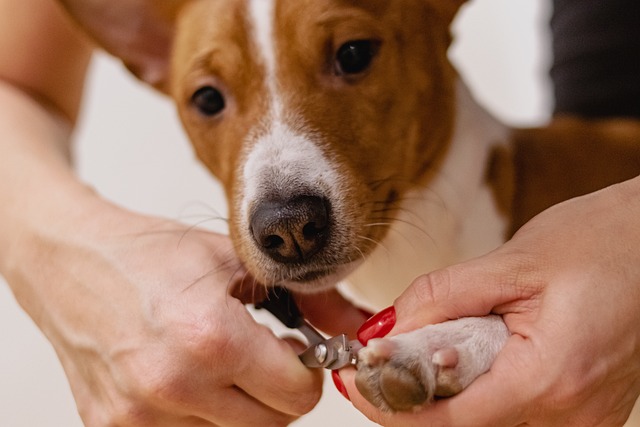Introduction
Pet owners are becoming increasingly concerned with the growing costs of veterinary care. With advances in medical technology and treatment options, the prices for pet surgeries, emergency care, and even routine checkups have surged in recent years. Pet health insurance can serve as a financial lifesaver in such times, offering coverage that can mitigate these mounting costs. This article explores how pet insurance helps shield you from the rising expenses associated with veterinary care.

Why Veterinary Costs Are on the Rise
The rising costs of veterinary care are influenced by a combination of factors. The cost of medications and treatments for pets has escalated due to inflation, research advancements, and improved diagnostic tools. For example, specialized surgeries for pets are often as expensive, if not more so, than those for humans. Additionally, the increasing frequency of chronic conditions and long-term illnesses in pets has contributed to higher treatment demands, further driving up costs.
How Pet Insurance Works: A Financial Safety Net for Your Pet’s Health
Pet insurance works similarly to human health insurance. By paying a monthly premium, pet owners can receive coverage for a range of veterinary services, including emergency care, surgeries, vaccinations, and preventative treatments. This coverage can significantly reduce the out-of-pocket expenses for pet health, making it easier to afford necessary treatments.
Types of Pet Insurance Plans: Finding the Right Fit
There are several types of pet insurance plans available to suit different needs and budgets. Accident-only plans typically cover emergency care due to accidents, while accident and illness plans offer more comprehensive coverage for a variety of conditions, including diseases and injuries. Wellness plans, on the other hand, focus on preventive care like routine checkups, vaccinations, and flea treatments.
Selecting the right plan depends on your pet’s age, breed, and health history. Older pets or those with pre-existing conditions may benefit from plans that cover chronic illness treatments, while younger, healthier pets may be fine with a basic accident plan.
How Pet Insurance Helps with Emergency Care Costs
Emergencies can happen without warning. Whether it’s an unexpected injury or a sudden illness, the cost of urgent care can be astronomical. Pet insurance helps offset these high emergency care costs, offering financial protection when you need it most. Most comprehensive plans cover not only accidents but also the treatment of sudden illnesses, surgeries, and hospitalization.
Long-Term Health Coverage: Preventing Future Financial Stress
Chronic illnesses and conditions that require ongoing veterinary attention can lead to considerable long-term costs. For instance, pets with diabetes, arthritis, or heart conditions may require regular visits to the vet, medications, and even specialty treatments. Long-term pet insurance plans are designed to cover these types of health issues, providing a safety net for conditions that require extended treatment.
The Value of Preventative Care in Reducing Future Veterinary Expenses
Routine wellness visits can help catch potential health issues before they become serious, and insurance plans often cover these preventive treatments. From annual checkups to vaccinations, preventive care can keep your pet healthy and help you avoid expensive treatments down the road. With pet insurance, you can afford to keep your pet’s health in check without breaking the bank.
Managing Pet Health Emergencies with Insurance Coverage
Pet health emergencies, such as broken bones, poisoning, or sudden illnesses, can be life-threatening and expensive. Having the right insurance coverage ensures that you can quickly seek veterinary help without worrying about the financial implications. Pet insurance not only covers the treatment but also helps you avoid delayed care due to cost concerns.
Accident-Only Coverage: A More Affordable Option
For pet owners on a budget, accident-only insurance plans are a more affordable way to protect against unexpected pet injuries. While they don’t cover illnesses or preventative care, they offer protection for situations where your pet may need emergency treatment due to accidents. This can be especially valuable for pets that spend a lot of time outdoors or are prone to injuries.
How Pre-existing Conditions Affect Pet Insurance Coverage
Pet insurance providers typically do not cover pre-existing conditions, which are health issues your pet had before the policy began. However, some insurers offer coverage for pre-existing conditions after a waiting period or if the condition has been in remission for a certain amount of time. It’s important to thoroughly read the policy terms to understand how pre-existing conditions may affect your pet’s coverage.
Pet Insurance Plans for Older Pets: Coverage After Age 10
As pets age, their risk for developing chronic health issues increases. Many insurance providers offer specialized plans for senior pets that cover conditions common in older animals, such as arthritis, diabetes, and kidney disease. These plans ensure that your elderly pet can receive the care they need without overwhelming your budget.
Choosing the Right Pet Insurance Provider
There are many pet insurance companies to choose from, and selecting the best one for your needs can be daunting. When comparing providers, consider the company’s reputation, customer service, claims process, and the types of coverage offered. Online reviews and testimonials can offer valuable insights into the experience other pet owners have had with specific insurers.
The Importance of Customizing Your Pet’s Insurance Plan
Many pet insurance companies offer customizable plans, allowing you to choose the level of coverage that fits your pet’s health needs and your financial situation. Whether you want to add dental coverage, wellness visits, or extended coverage for chronic conditions, customizing your plan can ensure that it meets all your pet’s healthcare requirements.
How Pet Insurance Reduces the Financial Burden of Veterinary Bills
Without pet insurance, you may find yourself facing exorbitant veterinary bills, especially after a major medical event. Pet insurance helps alleviate the financial burden by covering a large portion of your pet’s medical expenses. With the right coverage
